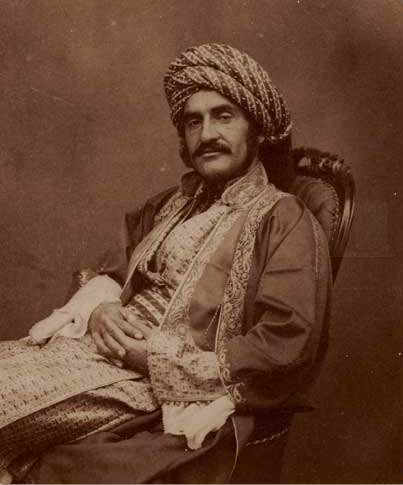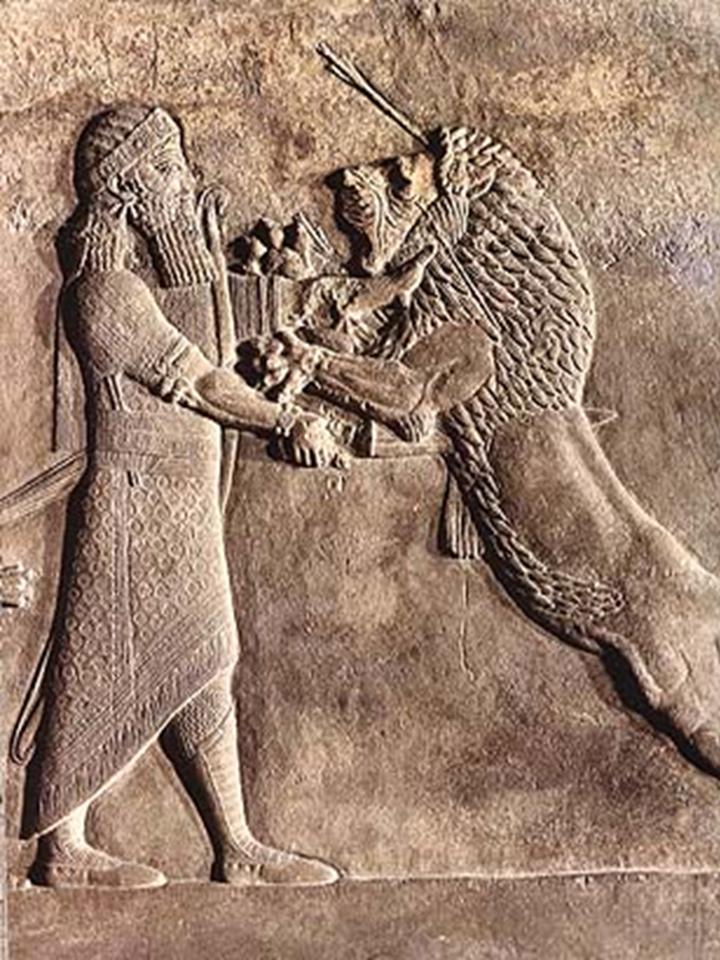2008 (1762)
2009 (1498)
2010 (796)
2011 (759)
2012 (633)
2013 (449)
2014 (575)
2015 (323)
2016 (276)
2017 (470)
2018 (127)
2023 (1)



Hormuzd Rassam (1826 – 16 September 1910) (Syriac: ????? ????), was a native Assyrian and Christian Assyriologist, British diplomat and traveller who made a number of important discoveries, including the clay tablets that contained the Epic of Gilgamesh, the world's oldest literature. Even though he became a British citizen later in his life he can be accepted to be the first known Assyrian, Ottoman and Middle Eastern archaeologist.
沒有Hormuzd Rassam , Louvre, British Museum 都會 失色, 但這位考古英雄卻不為人知曉, 沒發一點財

Biography
Rassam, an ethnic Assyrian, was born in Mosul, then part of the Ottoman Empire, (now modern Iraq) into a Chaldean Catholic and Assyrian Church of the East family. His father Anton Rassam was from Mosul and was archdeacon in the Assyrian Church of the East; his mother Theresa was daughter of Ishaak Halabee of Aleppo, Syria.[1] When he was 20 years old, he was hired by British archaeologist A.H. Layard as a pay master at a nearby dig site. Layard, who was in Mosul on his first expedition (1845–1847), was impressed by the hard-working Rassam and took him under his wing; they would remain friends for life. Layard provided an opportunity for Rassam to travel to England and study at Oxford (Magdalen College), where he stayed for 18 months before accompanying Layard on his second expedition to Iraq (1849–1851).
Layard then began a political career, and Rassam continued field work (1852–1854) at Nimrud and Kuyunjik, where he made a number of important and independent discoveries, including clay tablets that would later be deciphered by George Smith as the Epic of Gilgamesh, the world's oldest-known example of written literature.
Rassam then returned to England and, with the help of his friend Layard, started a new career in government with a posting to the British Consulate in Aden. In 1866, an international crisis erupted in Ethiopia when British missionaries were taken hostage by Emperor Tewodros II of Ethiopia. England decided to send Rassam as an ambassador with a message from Queen Victoria in the hope of resolving the situation peacefully. After being delayed for about a year in Massawa, Rassam at last received permission from the Emperor to enter his realm, but due to rebellions in Tigray was forced to follow a circuitous route taking him to Kassala, then to Metemma, along the western shore of Lake Tana to finally meet with Emperor Tewodros in northern Gojjam. At first his embassy seemed promising, as the Emperor established him at Qorata, a village on the south-eastern shores of Lake Tana, and sent him numerous gifts, as well as having the British consul Charles Duncan Cameron, the missionary Henry Stern, and the other hostages sent to his encampment. However, the monarch suddenly changed his attitude towards Rassam and he, too, was to become Tewodros' prisoner and was held for two years until English and Indian troops under Robert Napier in the 1868 Expedition to Abyssinia resolved the standoff by defeating the warlord and his army.[2] Rassam's reputation was damaged because he was unfairly portrayed as weak and ineffectual in dealing with the warlord, in large part due to systemic Victorian prejudices against "Orientals".[3]
His political career in ruins, Rassam resumed his archaeological work. He was sent by the British Museum to Assyria, where he conducted important investigations, especially at Nineveh. During the Russo-Turkish War, he undertook a mission of inquiry to report on the condition of the Assyrian, Armenian and Greek Christian communities of Asia Minor and Armenia. His archaeological work resulted in many important discoveries and the collection of valuable epigraphical evidence.
Discoveries
From 1877 to 1882, Rassam made some important discoveries. In Assyria his chief "finds" were the Ashurnaçirpal temple in Nimrud, the cylinder of Ashurbanipal at Kouyunjik, and the unique and historically important bronze doors of the temple of Shalmaneser III. He identified the famous Hanging Gardens with the mound known as Babil. A palace of Nebuchadrezzar II at Birs Nimrud (Borsippa) was also uncovered by him. At Abu Habba, in 1881, Rassam discovered the temple of the sun at Sippar. There he found a clay cylinder of Nabonidus, and the stone tablet of Nabu-apal-iddin of Babylon with its ritual bas-relief and inscription. Besides these, he discovered some fifty thousand clay tablets containing the temple accounts. [4]
After 1882, Rassam lived mainly at Brighton, writing on Assyro-Babylonian exploration, on the Christian peoples of the Near East, and on current religious controversies in England. He was a fellow of the Royal Geographical Society, the Society of Biblical Archaeology, and the Victoria Institute.
One of his greatest discoveries was the clay tablets that contained the Epic of Gilgamesh, the world's oldest surviving literature. In addition, he found the Cyrus cylinder, the famous declaration of Cyrus the Great that was issued in 539 BC to commemorate the Persian Empire's conquest of Babylon. Rassam's discoveries attracted worldwide attention, and the Royal Academy of Sciences at Turin awarded him the Brazza prize of 12,000 fr. for the four years 1879-82.
His publications include: The British Mission to Theodore, King of Abyssinia, (1869) and Asshur and the Land of Nimrod (1897).
Rassam married an Englishwoman, Anne Eliza Price, and became the father of 7 children. His eldest daughter, Theresa Rassam, born in 1871, was a professional singer who sang with the D'Oyly Carte Opera Company.[5]
He also had a girl Annie Ferida Rassam, born in 1878, who secretly gave birth after 7 months of pregnancy on September 10th, 1914 to a girl named Jeanne Ferida Rassam in the private hospital Vercingétorix, 219 Street Vercingétorix in Paris 14th district. The presumed father of this child was Sir Wallinger who was delegated by secret services in Paris. Jeanne Ferida Rassam was adopted by a French couple, Sir and Ms COURTHIAL. Annie Ferida Rassam returned to Brighton few months later.
(wiki )

In the Ancient Near East, clay tablets (Akkadian ?uppu(m) ????[1]) were used as a writing medium, especially for writing in cuneiform, throughout the Bronze Age and well into the Iron Age.




